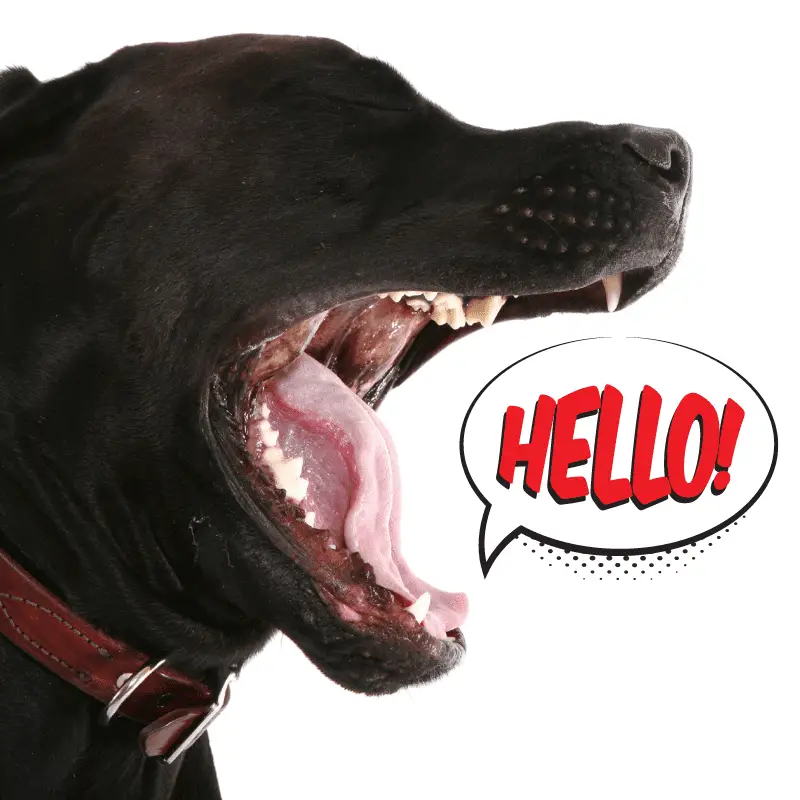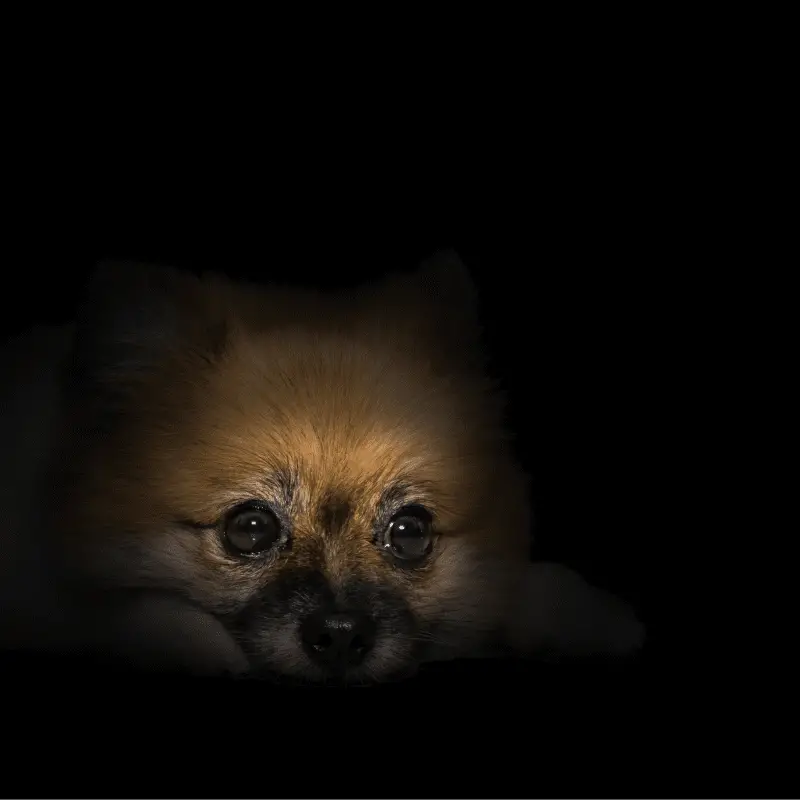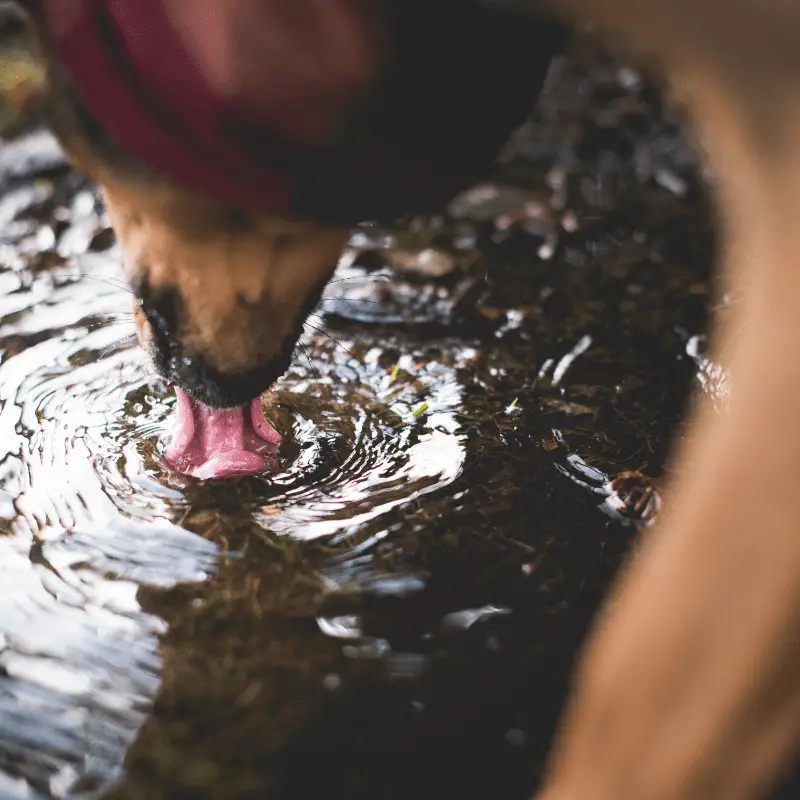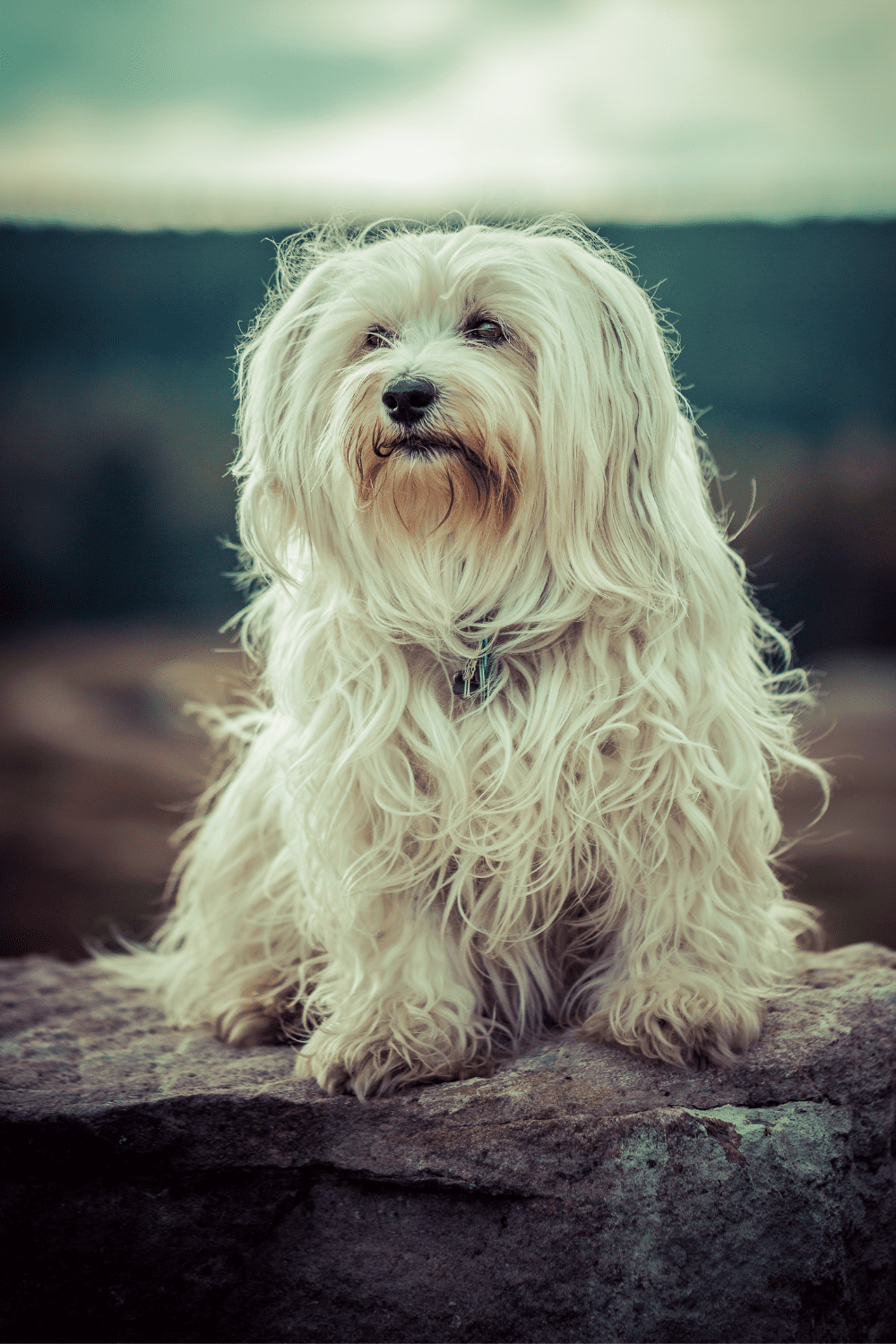Considering how in tune dogs are with humans, such as the ability to create endorphins such as oxytocin in both human and dog brains, as a child and mother do. Surprisingly, they can’t talk like us. Dogs have been domesticated for thousands of years, so why haven’t they learned how to speak yet?
Dogs can’t talk because they lack brain ability. Along with the shape of their mouth, tongue and voice box, these all play a role in not talking even if they had the brain ability. Dogs can, however, understand basic words, similar to a two-year-old.
How do dogs communicate with humans?
Dogs can communicate with us through body gestures, facial expressions and noise. They can growl when angry, bark as an alarm sounds like during thunderstorms or while playing tug-of-war games at home! They may have a particular stance telling you they’re feeling scared or defensive; their ears might be tucked back if they feel threatened by something in the environment.
Emotions of a Dog and the Body Languages Displayed
Dogs don’t speak our language, but we can still learn to read their body when they’re trying to tell us something. It’s not always easy, though; some dogs show only the slightest hint of what they want or need, so it takes a little bit more time and patience on your part! The below list will help you.
| Emotions | Displayed Body Language |
|---|---|
| Anger | Body puffed up, stiff body, staring eyes, ears down and flat if possible, hackles up, barking, growling, barred teeth. |
| Anticipation | Sitting, ears up, standing still, eye contact fixed on an area of interest, or a person of interest, inner brow raised. |
| Anxiety | Low to the ground, eyes wide and pupils enlarged, trembling, forehead wrinkled, tail lowered and tucked under or around the body—unsettled movements, pacing, yawning, panting, avoiding eye contact. |
| Boredom | Excessive licking, pacing, chewing, digging, scratching, whining, and barking. |
| Content | Body relaxed, sleepy, sign combined with half-closed or closed eyes. |
| Curious | Head tilted, wrinkled forehead, ears up |
| Depressed | Tail down, lowered energy, uninterested look, avoiding eye contact, eyes small and squinting, whining. |
| Disappointment | Fully wide eyes combined with a sigh. |
| Excitement | Jumping up, running around, tail wagging, panting, whining, barking. |
| Fear | Excessive licking, pacing, chewing, digging, scratching, whining, barking, growling, and attention-seeking by crowding your space. |
| Frustration | Growling, barking, and biting out |
| Happiness | Relaxed body, head held high, tail relaxed, tail wagging, bright movement and confident posture. |
| Interest | Head tilted, wrinkled forehead, forward movement, high posture |
| Jealousy | Excessive licking, pacing, chewing, digging, scratching, whining, barking, growling, attention-seeking by crowding your space. |
| Joy | Jumping up, running around, tail wagging or whole body wagging, relaxed posture, raised head, panting, and barking. |
| Loneliness | Tail down, lowered energy, uninterested look, avoiding eye contact, eyes small and squinting, whining. |
| Love | Eye contact, raised eyebrows, wagging tail or whole body wagging, relaxed body, paw tapping and raised head. |
| Sadness | Tail down, lowered energy, uninterested look, eyes small and squinting, whining. |
| Satisfaction | Body relaxed, sign combined with half-closed eyes |
| Shame | Tail down, head down, body and bottom down, backing or running away. |
| Surprise | Jumping up, running around, tail wagging or whole body wagging, raised head and barking. |
Visualising Canine Emotions: An Infographic Guide to Understanding Your Dog’s Feelings
This infographic visually represents the range of emotions that dogs experience.

How can I understand my dog more?
Watch your dog closely and get to know your dog’s personality by spending time with them. The longer you spend with your dog, the easier it will be to get to know them. Learn the above list of body language displayed in certain emotional states of a dog. Have plenty of patience; you will soon understand your dog’s every need.
Ever wondered why your furry friend yawns while receiving some love and attention? There are a variety of reasons, including calming signals or even confusion. Discover more reasons why dogs yawn when being petted.
Why can parrots talk but not dogs?
A parrot’s brain functions differently from other species, such as a dog, which mimics others with such ease. Their extreme desire to fit in makes them the most clever at adapting and fitting into a flock or household. They do this through their outstanding vocal mimicry skills.
Try This With Your Dog
It only works if your dog knows the sit command: Dogs can’t distinguish the difference between variations of human words that sound similar, such as sit, set, and sat.
Give them the sit command using either set or sat and see if they sit.
If they don’t sit, you must have one clever dog!
But chances are they will sit.
If your dog does sit, this doesn’t mean they aren’t clever. Dogs are different from humans and have many other qualities, if not better, than us humans, such as loyalty and non-judgement.
Domestication
Dogs have been domesticated for thousands of years. You would think they knew how to talk by now, but instead, it’s all down to brainpower to enable them to speak. When humans grow up, they need to be taught: a human brain requires the ability and stability that can only come with age- this is what enables us to learn language skills such as speaking or understanding words because our brains are stronger than dogs.
The importance of being consistent with speech during training
When training a dog using your voice, it’s best to be as consistent as possible. This way, your dog can have a better chance to pick up on the words you speak when an action or non-action is needed on their behalf.












